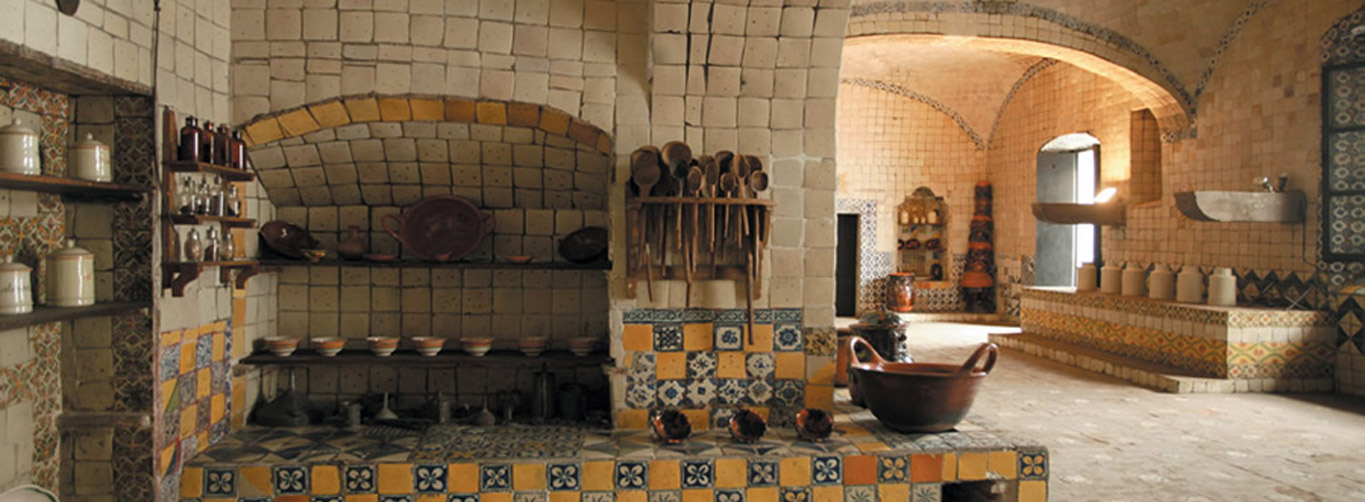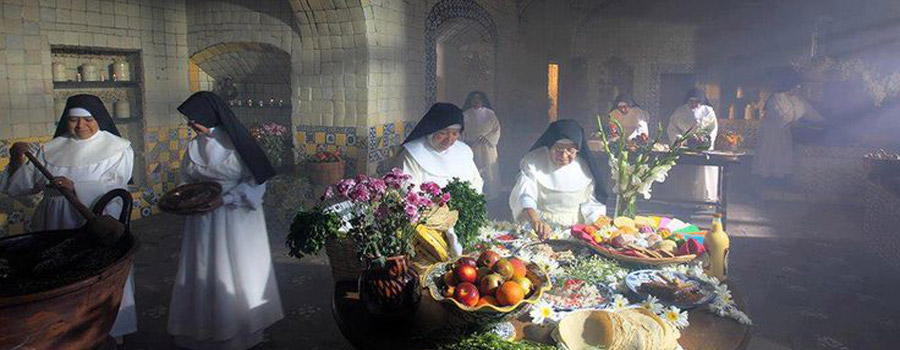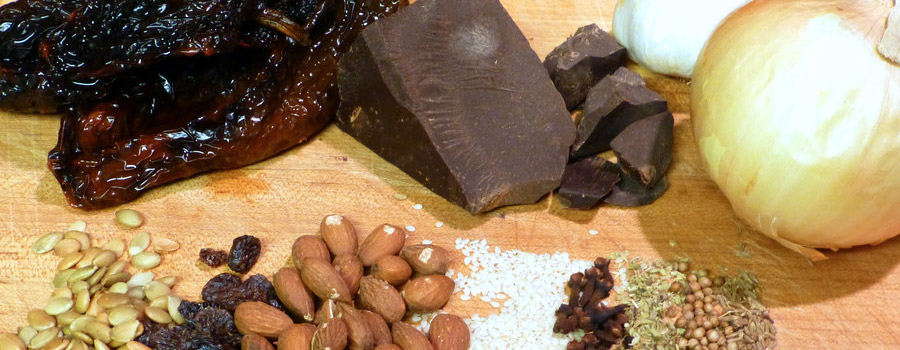In 1521 when Hernan Cortés arrived to Mexico, he entered not only with spices, livestock and fruit,but he also brought monks, rosaries and priests!
The monks, priests, nuns and Spanish conquers devised a plan to win over the indigenous groups and their faith that was so very different from them. Sure there were wars, fights and heated discussions but the real change happened in the kitchen.
The Kitchen That Changed Mexico

Puebla, in Central Mexico was one of the most important cities during the Spanish conquest and remains a historical gem.
In this city, we find the Saint Rose convent where the national Mexican dish Mole was made. The legend says that one of the nun’s, Rose, panicked in the kitchen when she was preparing the arrival meal for important Catholic dignitaries. As she prayed for inspiration, an angel came to her rescue. The angel walked her through a recipe that combined both local and imported ingredients, items the nun never thought to combine; nuts, dried fruit, chili, and chocolate together as a sauce to be served with turkey.
The dish received rave reviews by the visiting dignitaries and was later adopted as one of the many national dishes of Mexico. Mole, (pronounced mole -ay) is a coveted recipe used in international kitchens and restaurants all over the world that was not created by the local community but by a Catholic nun.
The Recipe Book That Influenced Local Communities

Throughout museums in Mexico, you will find recipe books written by local nuns, that helped to spread Catholicism to local communities.
As the nuns cooked and shared their cooking techniques with local women, they incorporated Catholic rituals and symbolism into their recipes. These recipe is a translation of the historical text.
“Peal 20 pears carefully taking care of do not remove the stamp, soak in red wine for 15 rosaries and 5 holly Marie’s.
In a copper pot melt 5 big spoons of sugar on low hit stirring gently for approximately 9 holly Fathers and 6 holly Marie´s.
Strain the pears and put them in the caramel made before. Add a little bit of the red wine, cinnamon stick, 5 cloves, 3 pieces of star anise and cook in low heat 10 rosaries and 3 holly fathers more.
Serve cold.”
Conniving – yes! Did it work? Yes! Women throughout the country practiced these new recipes that introduced Catholic terminology and beliefs. What helped is that the finished product was exceptionally delicious.
The Clever Integration of New World Recipes into Festivals
All of these new recipes were integrated into local festivals that indigenous communities celebrated. This strategy was done slowly, and methodically.
While the Aztec communities worshiped their Gods, the god of Corn, the God of Cacao, the Rain God, the Spanish attached a Catholic Saint to the indigenous celebration to introduce Catholic beliefs. New dishes were served with historical dishes used by the local community.
To this day each religious and national holiday has a festival dish attached to the celebrations. El Dia de Candelaria (Candle Day) is famous for its tamales. El Dia de Rey, Kings Day (celebration of the arrival of the Three Kings) is famous for its ring of sweet bread. El Dia de Independancia, Independence Day (a political national holiday) is famous for its Chiles en Nogadas.
Continued Traditions in Contemporary Mexico
This is just a short list and understanding of the folklore that surrounds the introduction of the Catholic Church into Aztec and Mayan communities. In the Yucatan, the Spanish influenced Yucatecan cuisine in more profound ways. Obviously the strategy worked. Over 80% of the Mexican population identifies as Catholic, and the kitchen remains the center of every religious holiday.
Check out our Walking Food Tours in the Riviera Maya to learn more about Mexican food.


Comments